By Chandler Eli Getty Carr
Related paper: Repeatability of an extended phenotype: Potential causes and consequences of nest variation in Troglodytes aedon (Northern House Wren) by Chandler E. G. Carr, Zoë M. Swanson, Dustin G. Reichard. Ornithology
To the world, this work may constitute just another research paper. For me, it represents my first real step into the world of science. More than two years ago as an undergraduate at Ohio Wesleyan University, I began a summer internship in Dr. Dustin Reichard’s lab to gain research experience with wild birds. We started with basic field techniques, nest checks, and leg banding, but I was also tasked with developing a research project. The goal? A simple study that could be completed in the summer. The outcome? More than 300 hours of effort, across two semesters, collecting and dissecting the nests of Troglodytes aedon (Northern House Wren).
One of the first things I noticed about T. aedon nests was that they were extremely variable. One wren built its nest only a few centimeters in height, while another built its nest so tall that it eclipsed the entrance hole, making it difficult to even see inside the box! I had to know the reason for these differences.
T. aedon nests include two primary sections: a stick platform and the cup; their construction is a joint effort between the male and the female. The male adds sticks to the box when he claims the territory, while the female finishes the stick platform and constructs the cup—the comfy part for the eggs and young—after she chooses the male as her mate. You might expect the quality of the nest to affect the survival of the young or the ability of the male to get a mate, but the evidence suggests that nests do not affect fitness. I began to wonder: If there wasn’t one “perfect” nest structure, then does the extreme variation in nests instead reflect the individual preferences—or the “artistry”—of the builder?
Because the female builds the majority of the nest, we caught and tagged each female with colored leg bands and observed, measured, and collected their nests throughout the summer. T. aedon females lay two to three clutches, sometimes in the same box, but often in different boxes. This variability allowed us to test whether the female builder or the dimensions of the box better explained nest characteristics.
For each nest, we also noted whether it fledged or failed, and collected the nest after it reached either endpoint to dissect it back in the lab. My team and I spent hundreds of hours dissecting each nest, 103 in total, and counting the number of sticks, pieces of grass, feathers, and more. T. aedon nests ranged from 170 to 1,491 sticks in the platform and 0 to 836 pieces of grass in the cup. They contain feathers from a variety of bird species, from Cardinalis cardinalis (Northern Cardinals) to Cyanocitta cristata (Blue Jays) to Bombycilla cedrorum (Cedar Waxwings). Some even had snake skin! Despite the work, and the feces, I find T. aedon nests to be quite beautiful—they are so much more complex than I ever expected!
Female T. aedon revealed their building preferences in their nests, at least in the cup. The feathers and grasses of the nest cup were repeatable across clutches. To match this finding, we found that these characteristics did not seem to change with timing during the summer or the outcome of the nest. So, despite previous nesting attempts or changes in the availability of building materials across the season, these wrens didn’t change the design of the cup.
They know what they want their nest to look like—and they stick to it! (Pun intended.)
One moment from that summer excellently captures the strength of this preference. On one occasion, we caught a female as she was returning to a nest full of eggs, and, even as she was hanging upside down in the mistnet, she still held a feather tightly in her bill. She was still fine-tuning her nest insulation in between bouts of incubating her eggs.
This project opened my eyes to the study of the expression of individual preferences in nest building. Where do these preferences come from? Are they learned? Are they genetic? Are they situational? We often ignore nests as simple structures that are just thrown together, but this research shows that nests hold more information about the builder and the environment than commonly thought.
Follow my future work on the mechanisms of individuality!
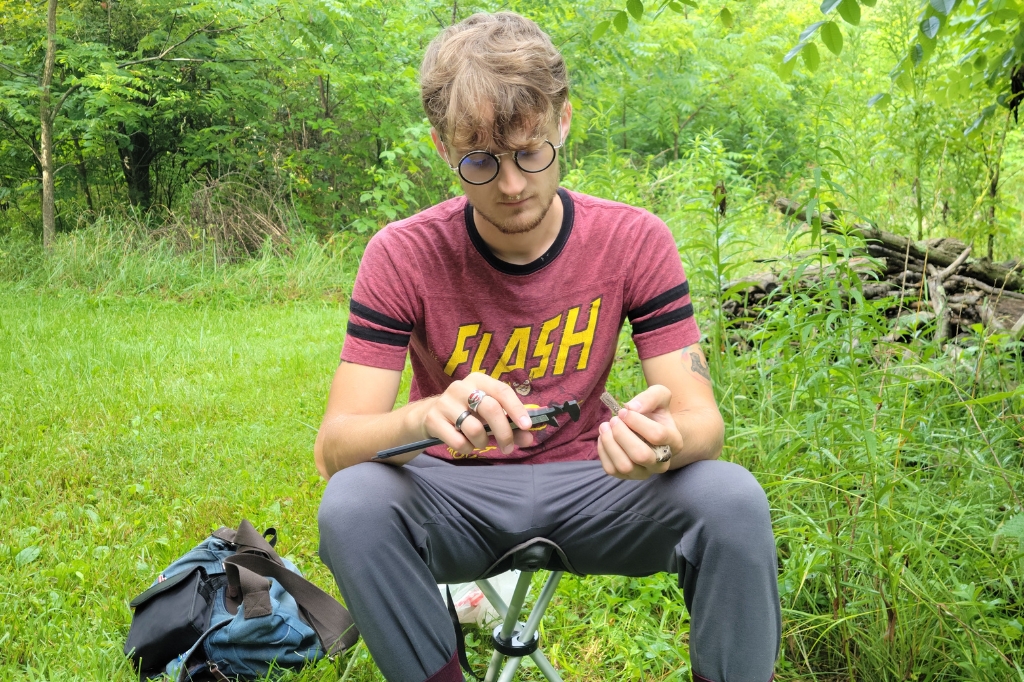
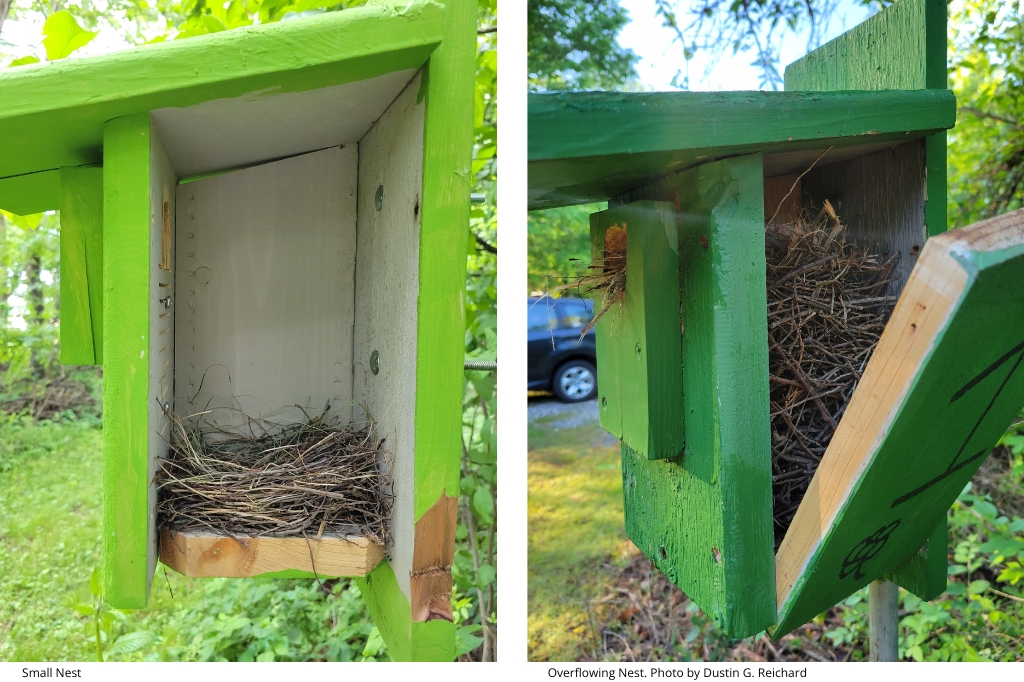
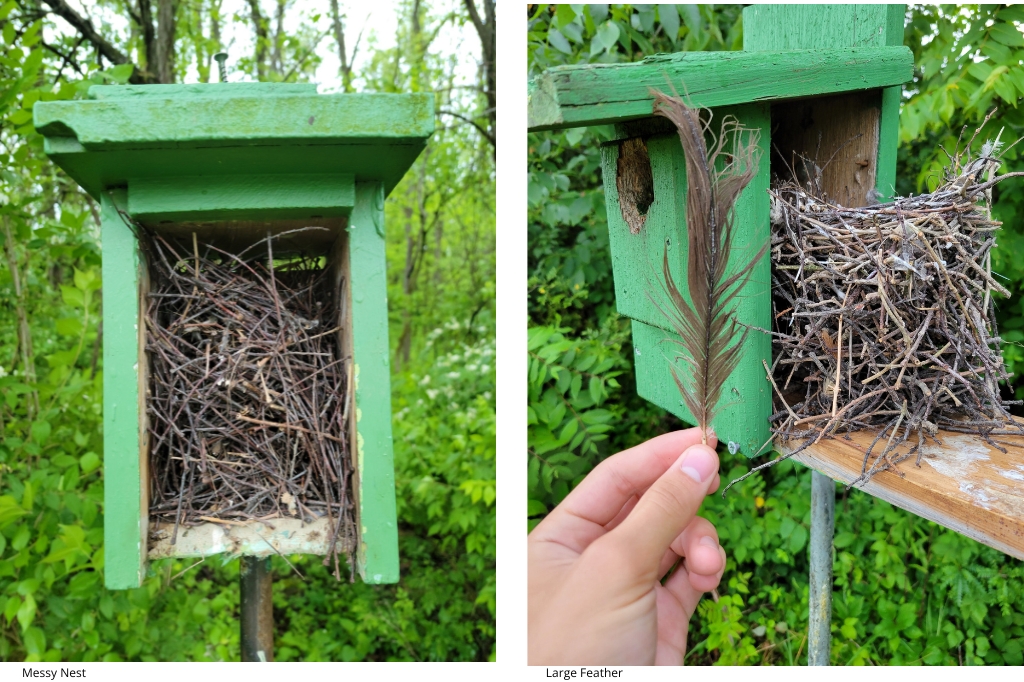
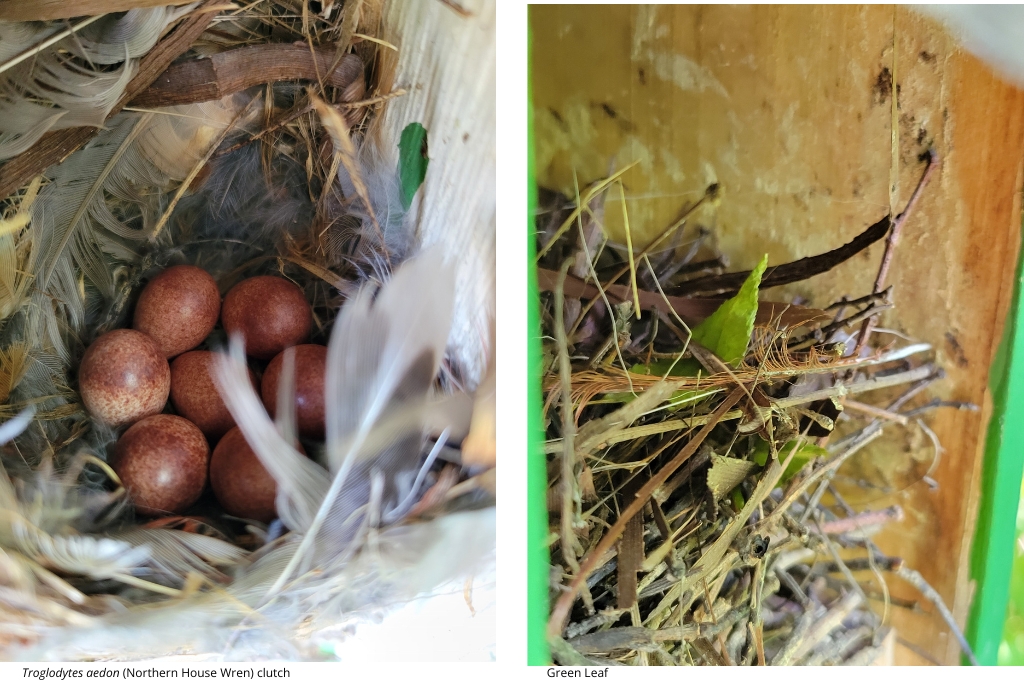
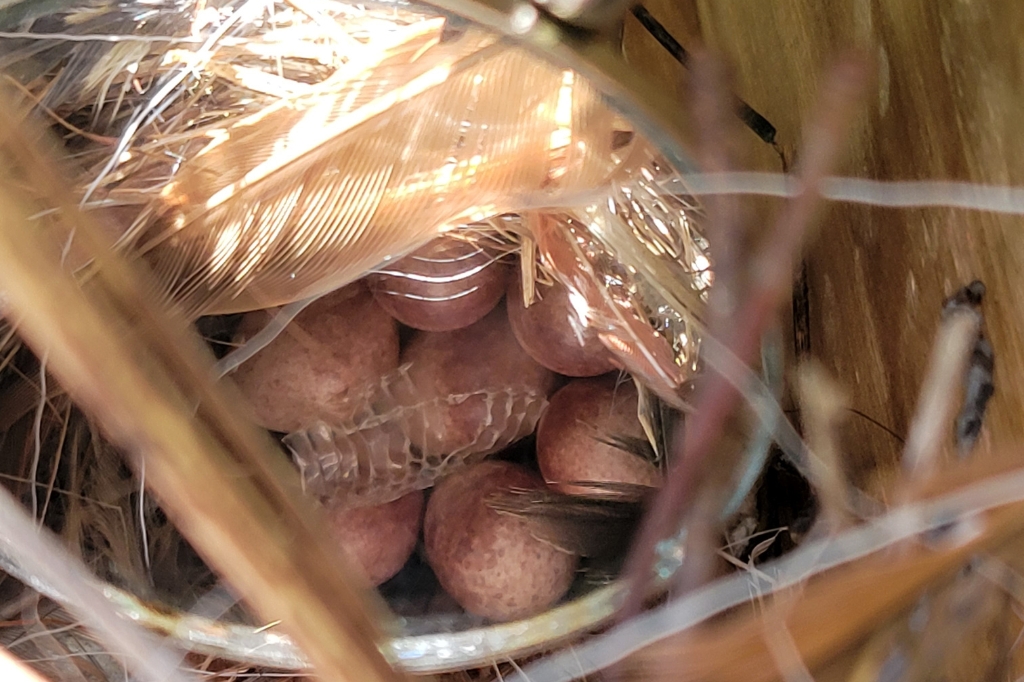
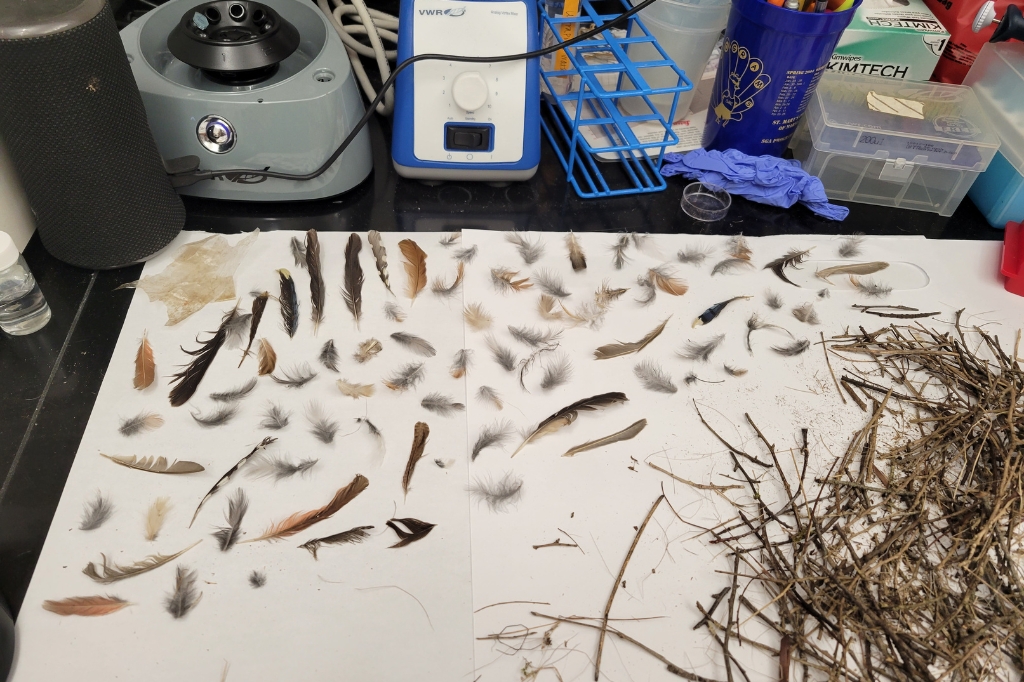
About fifteen years ago I sneaked a couple wren nest boxes into Central Park. One was to replace an earlier box which had collapsed. Thye other was to replace a hollowed branch being used by House Wrens. The collapsed box replacement was well hidden in large bushes and small trees and was readily used by the wrens. After two successful years the box looked completely filled with weeds, reeds and twigs. I decided to see iof I should empty it so they could start over in a clean box. To my surprise, the filled appearance was a ruse created by the birds. At the entrance there was a gap between the dried vegetation which allowed a wren-sized bird to hug the wall, turn left at the corner and traverse the side of the box to the next corner. There, the weed wall ended and the roomy living space for the nest was well hidden from the entrance by the front wall. There was no left turn at the entrance. The birds had created a secret room for raising chicks and were successful for several years. The box is still in existence. I haven’t seen any activity for a few years, but that doesn’t mean there wasn’t any. My birding schedule can get slim and sketchy and can’t be presumed to coincide with the comings and goings of the little engineers. Hope I get lucky this year.
Great article and well constructed research. Nice job.
Interesting research and well written findings!